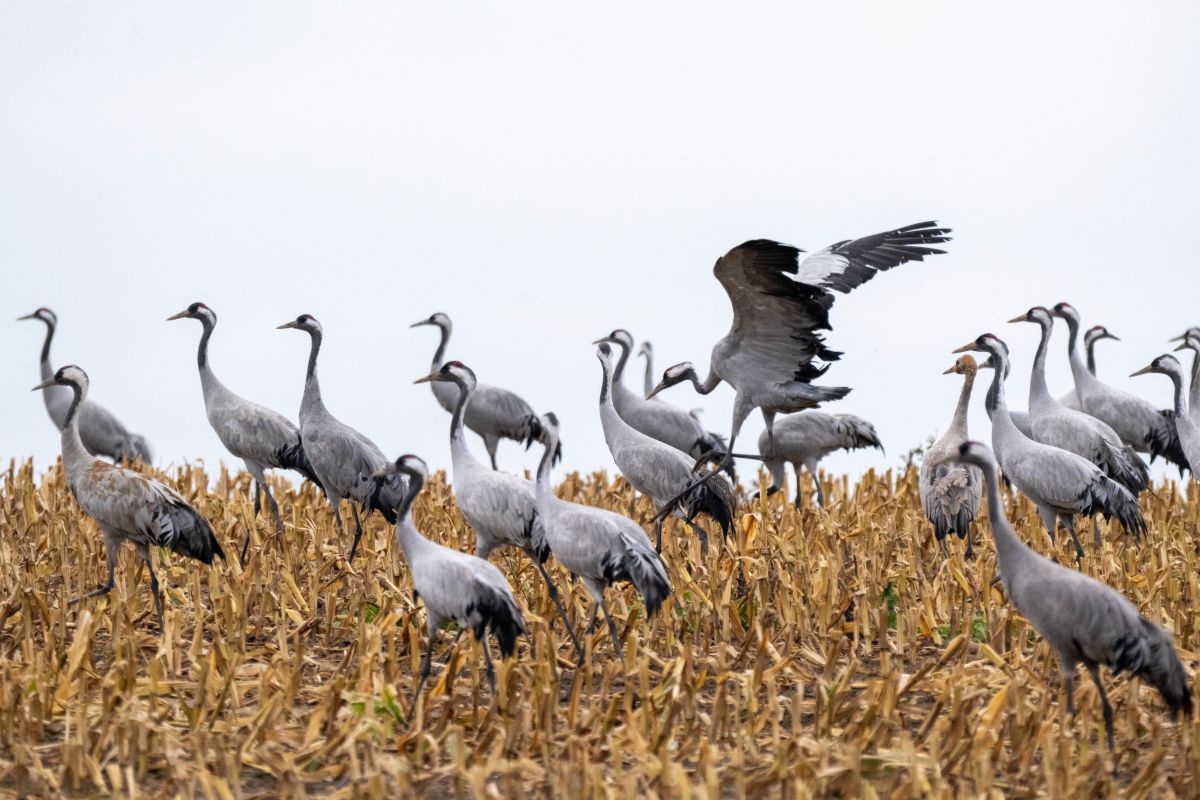From Deutsche Bahn’s Youtube miniseries to conservative leaders’ misguided approach to defeating the far-right to a different (winged) type of migration, here’s what we’re talking about at The Local this week.
Inside Germany is our weekly look at some of the news, talking points and gossip in Germany that you might’ve missed. It’s published each Saturday and members can receive it directly to their inbox by going to their newsletter preferences or adding their email to the sign-up box in this article.
Deutsche Bahn expanding into entertainment?
Look out Berliner Verkehrsbetriebe (BVG), because competition for the transport company making the best online video content is heating up!
This month Deutsche Bahn (DB), Germany’s best (and worst) national railway operator, made its debut in the entertainment sphere – launching a Youtube miniseries called “Boah, Bahn!” (Wow, train!).
‘Episodes’ come in the form of Youtube shorts, which portray the stories of the train’s staff in the style of a sit-com.
The first episode begins with Tina, the managing boss of an ICE train, announcing to passengers that they are set to arrive at their destination 15 minutes early. But when the early arrival turns into a severe delay, Tina tries to avoid making a follow-up announcement by keeping her focus on serving coffee instead…then chaos ensues.
Perhaps surprisingly, the series is well done – it’s funny and engaging, and makes for good German language practice (it’s only available in German without an option for English subtitles).
But why is Deutsche Bahn making videos now? Shouldn’t the company focus instead on improving its dreadful punctuality record?
Reportedly the idea for the show did not actually start in a DB board room, but instead with comedian and actor Anke Engelke, who plays the lead role in the series. In an interview with BR24, Engelke explained how she approached DB to do a six-month internship because she is “very curious”.
Her experiences working various positions on long-distance trains led her to conceptualise the series, which she then pitched to DB. Engelke sees the series is not so much as a PR campaign for the railway but as a kind of love letter to DB’s underappreciated staff: “I can’t save the railway, I can only make a series that appreciates the 200,000 people who work there.”
You can watch it here.

Entertainer Anke Engelke (M) takes a photo with Deutsche Bahn employees after a preview of the web series ‘Boah, Bahn!’ Photo: picture alliance/dpa | Helmut Fricke
READ ALSO: Another Swiss canton demands delayed Deutsche Bahn trains stop at border
Advertisement
Do they want to be beaten by the AfD?
“1.5K tests, same result. Rejecting far-right benefits centre-right,” wrote Stuart Thurnbull-Dugarte, co-author of a recent research paper which examined the effects of centrist parties accommodating the far-right, in a post on the social media app Bluesky this week.
In the related research paper, Turnbull-Dugarte and his colleagues note that “social democratic parties across Europe have increasingly adopted restrictive immigration rhetoric in response to radical right challengers” and that “these shifts carried electoral costs”.
Put simply, centrist parties tend to be more popular with voters when they stand in opposition to far-right talking points, whereas they tend to lose votes when they try to emulate far-right platforms.
This has been observed in the UK where Prime Minister Keir Starmer has seen a dramatic loss in voter support since signalling that his Labour party has shifted rightward on immigration. Similar arguments have been made about mainstream Democrats in the US, who have repeatedly tried to demonstrate agreement with Republican talking points only to lose to Donald Trump and his allies.
So it’s particularly frustrating, especially as an immigrant in Germany, to watch conservative leaders in Germany repeatedly double down on trying to win back Alternative for Germany (AfD) voters by calling for efforts to work with the party and mirroring their anti-immigration rhetoric.
This week several Christian Democrat (CDU) politicians in East German states have joined the call for a different approach to the AfD – read: yet another step towards ending the firewall.
Saskia Ludwig, from Brandenburg, suggested AfD leaders should be able to serve as “committee chairs and vice-presidents”.
At the same time, CDU leader and German Chancellor Friedrich Merz triggered a row over his far-right coded word choice when he spoke of a “problem in the cityscape” in Germany. Merz added this “problem” was why the “Interior Minister is now in the process of enabling and carrying out repatriations on a very large scale.”
So the Chancellor of Germany condemns the AfD with one breath and parrots their anti-immigration platform with the next.
READ ALSO: Germany close to deal with Taliban on Afghan deportations
Advertisement
It’s logical that this platform should lose voters to the far-right. Anyone already convinced that the country’s problems can be blamed explicitly on immigrants may as well vote for the undiluted version. Meanwhile those CDU voters who dislike the far-right are displeased by their party’s new face.
Where is this?

Photo: picture alliance/dpa | Stefan Sauer
Each year when temperatures begin to drop, more than 400,000 cranes make their way south- and westward through Germany toward destinations in the south of France, and then onto Spain where they will spend the winter months.
This week saw the first major migration of the large birds in Germany, according to a spokesman for the German Nature and Biodiversity Conservation Union (Nabu), which included some 20,000 Eurasian cranes flying over Hesse towards France.
The image above was taken in the northern state of Mecklenburg-Western Pomerania. Each year some cranes take a rest here, between Darß and the island of Rügen before their onward flight south.
Advertisement
According to Nabu, there are two main migration routes in Germany: one of which leads through Hesse and on via Rhineland-Palatinate and Saarland to France. The other runs from Lower Saxony through North Rhine-Westphalia.
A third, somewhat less frequented route runs through the south of Bavaria and Baden-Württemberg and also ends at southern French.
Disclaimer : This story is auto aggregated by a computer programme and has not been created or edited by DOWNTHENEWS. Publisher: thelocal.de









